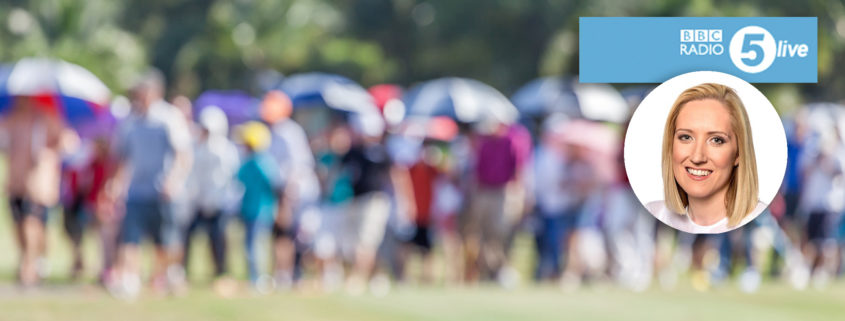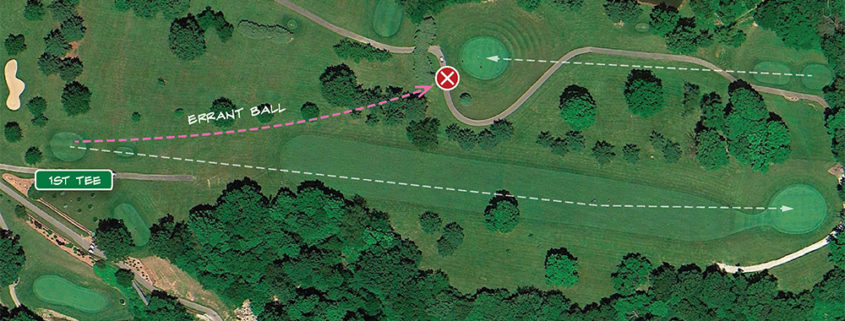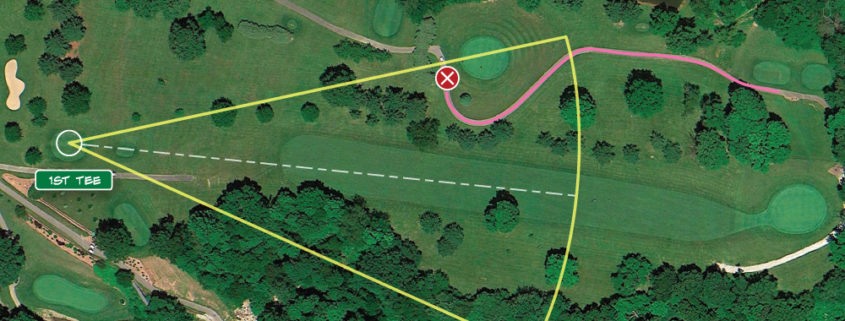Michael S. Johnstone, AIA, was interviewed on BBC Radio 5 Live following the Ryder Cup accident where a spectator was struck by an errant golf ball and lost the vision in her right eye. The incident raised international attention in the golf community and regarding spectator safety at sporting events in general. Here is an excerpt from Up All Night with Lisa McCormick that aired October 5, 2018.
Host Lisa McCormick: The recent success in Europe’s Ryder Cup also served to highlight an issue that’s been affecting the game of golf. A female spectator was struck by an errant shot during this year’s event that resulted in her losing her sight in her right eye. Then yesterday, another woman was hit on the forehead while watching the Alfred Dunhill Links Championship at the Kingsbarns Golf Course in St. Andrews. Fortunately, she escaped serious injury.
Incidents like these have resulted in some soul searching: How to make the game safer? Let’s talk in greater detail with Michael Johnstone who is a forensic golf course architect in North Carolina… Michael, what do you make of this?
Michael Johnstone: The effect it has on this woman’s life, of course, effects us all…. In the U.S., there are approximately 40,000 players a year who are injured by errant golf shots or by someone swinging their club and striking them in the head. So, this is not an unusual circumstance on the golf course.
Host: In what way can a golf course design make a difference, Michael?
Michael Johnstone: Well, I can talk about design for the normal play on a golf course, but in this particular case, the tournament makes the environment quite different because so many spectators are introduced to what I call “the playing field”, and there are people that don’t necessarily understand that a golf ball can move at a rate of 170 miles per hour. It’s a hard little object and if it strikes you in the temple or the eye or the jaw, it can actually be lethal.
Host: Is it just something that we have to accept as part and parcel of watching live sporting events like this? If you want to stand in a good position, there is a risk that something like this could happen?
Michael Johnstone: When I watch tournaments like this and I see this tiny little corridor that the professionals are supposed to hit through, and there are people on either side in this tiny little triangle, I think it is a mistake. People need to be pulled back further, but also there should be some education about the fact that it is possibly dangerous. When someone yells fore, F-O-R-E, people should turn away from the ball and put their hands up over the temples of their head to try to protect themselves.
Host: I’ve never been to a big golfing event, but are you given any sort of guidance or advice along those lines?
Michael Johnstone: Well, unfortunately in the U.S., we tend to respond to things after someone has been injured rather than to be preventative, which is a shame… We do that in healthcare, we do that with weather events, etc. …
Host: Sure… yeah, do you think then that with these recent events highlighting it as an issue, it can change the way we watch things like this in the future, the way spectator sports are done?
Michael Johnstone: I certainly hope so… We’re putting in this case thousands of people in harms way… of course they want to lean in to see a little more. We need to give them a little broader triangle. Even the professional golfers are just human beings. They are not going to hit it perfectly each time. I think education is a big thing and prevention would be really important to try to reduce the number of people who are injured this way.
Host: Michael, it’s good to hear from you and to share your expertise with us. Thanks for joining us on Up All Night… Michael Johnstone who is a forensic golf course architect in North Carolina. I like that… You go to a dinner party and someone asks what do you do? “I’m a forensic golf course architect.” That’s naturally going to be one of those titles you’re going to say, “What is that?”




